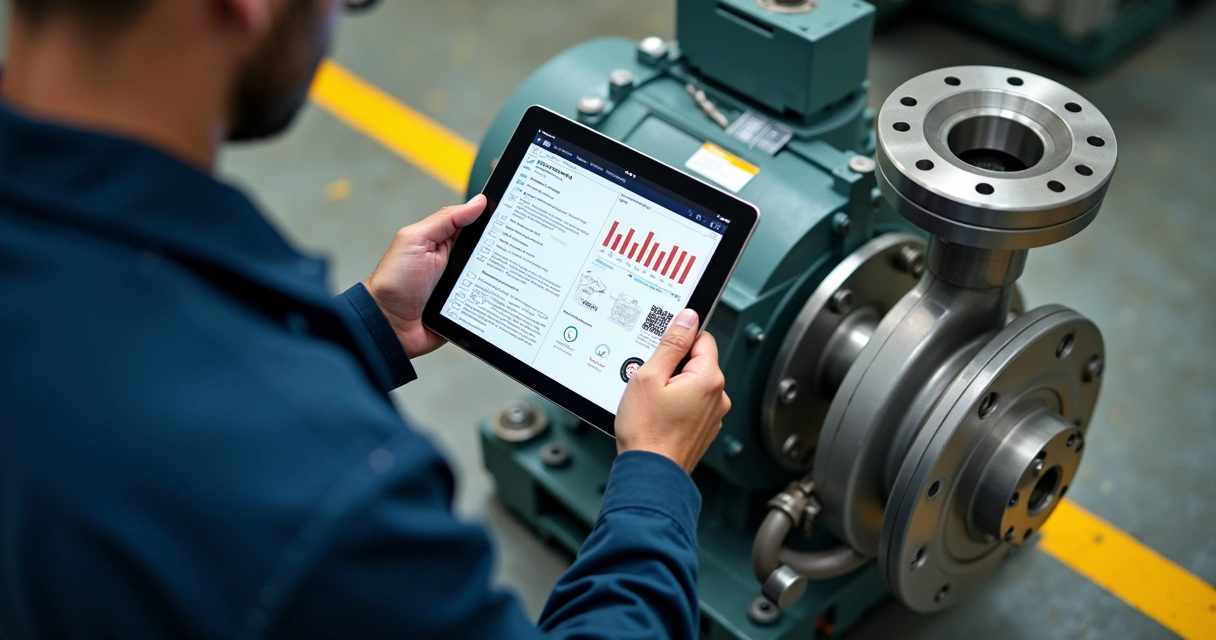How to Reduce Downtime with Automated Alert Workflows

How to Reduce Downtime with Automated Alert Workflows
The line goes quiet. You feel it in your chest first, then in the numbers. Downtime hurts. It breaks trust with customers, shakes schedules, and piles up costs. The good news is simple. You can see it coming sooner. You can act faster. Automated alert workflows make that real.
I once watched a night shift supervisor react to a vibration spike on a critical pump. He saw one alert among dozens. He called the right tech and kept the line alive. It felt like luck. It should feel like design.
Send the right signal, at the right time, to the right person.
That is the goal. Not more alerts. Smarter alerts. Let’s walk through how to set up workflows that cut noise, point to clear actions, and keep assets running. I think it is not magic. It is careful, honest work.
What automated alert workflows are
Automated alert workflows are a set of rules that take a signal, decide what it means, and push a guided response. A signal could be anything. A temperature jump, a work order stuck in waiting, an energy draw that looks odd. The workflow decides who gets notified, how fast to escalate, and which playbook to start.
Prelix supports this end to end. It ties signals to instant fault diagnosis, builds 5 Whys diagrams, and creates records for compliance. You do not need to replace your systems. Prelix plugs into what you already use and helps your team move from reports to action.

Why alerts reduce downtime
Fast, clear signals cut response time and avoid secondary damage. There is a pattern in different fields. In security operations, a machine learning framework for alert prioritization that cut response time by 22.9 percent shows how triage focus speeds action. Another study on an automated alert classification and triage system that reduced alerts shown to analysts by 61 percent shows noise suppression at scale. Hospitals see the same effect. Patient outcome predictions improve operations at a large hospital network and shortened stays by 0.67 days per patient. In heavy industry, AI-enabled operations at Fermi complex for outage prediction and diagnosis points to fewer unplanned stops through earlier detection.
Different worlds, same lesson. Better alerts can save hours. Sometimes days.
How to design a workflow that works
Start small and honest.
- Map the failure modes that matter. Pick five. Not fifty. Think high cost, safety impact, or high frequency.
- Define signals and thresholds. For each failure mode, list the sensors, system events, and human checks that warn you. Use two-stage thresholds, like warning and critical.
- Write the action in one line. If this alert fires, who does what in the next ten minutes. Keep it plain.
- Choose channels. Email is slow. Use SMS or radio for high severity. Use chat for advisory. Yes, it feels picky, but it matters.
- Agree on escalation. If no response in 5 minutes, send to supervisor. If still no response in 10, call the on-call engineer.
- Log everything. Every alert, action, and outcome should land in your CMMS ticket or incident record.
Prelix helps at steps 1, 3, and 6. It can suggest likely causes from patterns, attach a 5 Whys tree, and produce a clean report that meets audit needs. If you like a deeper walk-through, see a practical guide to RCA for industrial teams and the companion RCA with AI guide.
Smart prioritization and noise control
Alert fatigue is real. It hides real issues. You can cut it with three simple moves.
- Group by asset context. Link signals from the same asset into one incident. One page. One owner.
- Score actionability. Mix severity, confidence, and impact. An older pump with known seal wear might bump the score. A new seal lowers it.
- Suppress repeats. If the same advisory fires five times in ten minutes, keep one and update the timer. Not five dings.
If you want proof this approach works, that first study on a machine learning framework for alert prioritization that cut response time by 22.9 percent mirrors this logic. And the paper on an automated alert classification and triage system that reduced alerts shown to analysts by 61 percent shows how learning from human actions improves future routing. Different domain, same playbook.
Playbooks that act for you
A good alert does not only shout. It does work.
- Auto-enrich the alert. Pull the last 24 hours of trends, recent work history, and open parts orders into the ticket.
- Trigger safe first steps. Start a controlled slowdown. Switch to redundant equipment if available. Sometimes even a simple reset, but only with guardrails.
- Propose likely cause and checks. With Prelix, the alert can carry a short fault tree and a 5 Whys sketch, so the tech hits the floor ready.

Measure, learn, and adjust
You cannot improve what you do not measure. Track these, even if it feels messy at first:
- Mean time to acknowledge. From alert to the first human response.
- Mean time to action. From alert to the first field step.
- Mean time to repair. You know this one. Watch how it moves as your workflows mature.
- False positive rate. How many alerts led to no action or no fault found.
- Suppression saves. How many duplicates or low-value alerts you cut out.
If you keep a weekly rhythm, you will see friction points. Maybe night shift gets buried. Maybe one asset floods the channel. Tweak. Then tweak again. The Fermi work on AI-enabled operations at Fermi complex for outage prediction and diagnosis is a reminder that tuning with real data brings steady gains over time.
Connect alerts to root cause and compliance
Downtime does not end when the motor spins again. It ends when you know why it happened and how to prevent the next one. That is where RCA sits. Prelix turns an incident into a structured analysis with diagrams and the 5 Whys. You can share it, learn from it, and close the loop.
For deeper reading, the Portuguese RCA guide for industrial teams covers methods, while our Prelix blog and the blog in Portuguese bring cases and small tips you can try tomorrow.
Shorten the gap between signal and learning.
A simple rollout plan
Here is a five-step plan you can try in the next 30 days.
- Pick one asset class and two high-impact failure modes.
- Draft alert rules, actions, and escalation with the people who will use them.
- Pilot for two weeks. Watch noise and timing. Keep a notebook.
- Adjust thresholds and playbooks. Add auto-enrichment where it helps.
- Roll out to a second asset class. Share what changed and why.
It sounds almost too plain. That is the point. Plain wins.
Conclusion
Automated alert workflows do not have to be big or brittle. Start with what you know, let data guide the thresholds, and keep the action steps clear. Prelix can help with instant diagnosis, clean diagrams, and reports that stand up to audits, so your team can move faster with less guesswork. If you want to cut downtime and turn every incident into learning, start a pilot. Reach out, get to know Prelix, and see how your next month can look different.
Frequently Asked Questions
What are automated alert workflows?
They are rules that turn signals into guided actions. A workflow sets who gets notified, how fast to escalate, and which steps to run, so teams respond with less delay and less noise.
How can alerts reduce downtime?
Timely, prioritized alerts point people to the right task early. Studies on alert prioritization and outage prediction show faster response and fewer incidents, which trims hours from failures.
How to set up automated alerts?
List key failure modes, define clear thresholds, write one-line actions, choose fast channels, set escalation timers, and log outcomes. Start small, review weekly, and adjust.
What tools help automate alert workflows?
Use your existing sensors and maintenance systems, plus a layer that routes, enriches, and learns. Prelix adds fault diagnosis, 5 Whys, and reporting without heavy changes.
Is it worth automating alert workflows?
Yes. Teams see quicker response, fewer false alarms, and better learning after each event. Even a modest pilot can pay back fast with less unplanned downtime.
